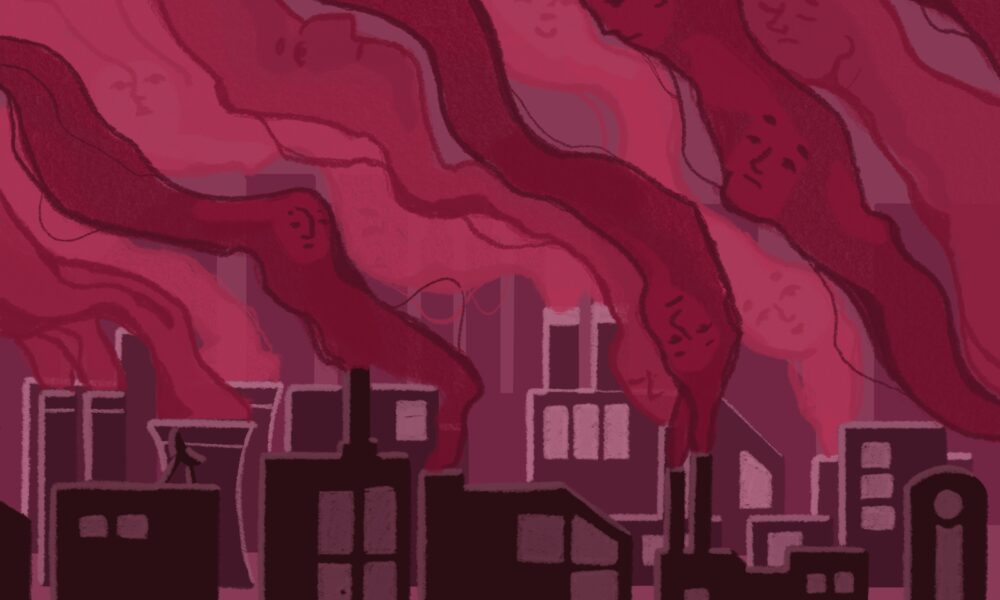Air pollution from industrial processes, cars, and even forest fires means that the air we breathe contains numerous harmful particles and debris. Fine particulate matter, known as PM2.5, are tiny particles in the air released by both natural sources and human activities. Since The McGill Tribune last reported on this fine particulate matter, PM2.5 has only garnered more attention. Their name is derived from their 2.5 micron width. For reference, a rain droplet is around 10 microns in diametre. PM2.5 is not made of one chemical, but rather a mixture of different pollutants such as pollen, ash, aerosols, and fumes. These particles can be directly emitted by combustion reactions, such as the burning of fossil fuels, or formed through the reactions of different gasses interacting. But no matter how these particles form, PM2.5 poses a serious risk to our health.
The microscopic size of PM2.5 means that these particles penetrate deeper into our lungs than larger pollutants, which are typically deposited in the upper respiratory tract. PM2.5 deposition can lead to inflammation of lung tissue and subsequent tissue damage. Short-term exposure to PM2.5 has been found to cause respiratory ailments, such as acute and chronic bronchitis. Long-term PM2.5 exposure is linked to premature mortality, especially among children and people with chronic heart or lung conditions. While the connection between high concentrations of PM2.5 and increased mortality is well established, the safe level of exposure is still being determined. According to a recent McGill study published in Science Advances, a safe concentration of PM2.5 is much lower than previously thought.
Canada, compared to other countries, has relatively low PM2.5 levels, with a current average annual concentration of 7.1 micrograms per cubic metre. The limited presence of PM2.5 is due to stringent regulations in place for industrial emissions and coal burning, resulting in cleaner air than in countries with more lax regulations. Due to having low PM2.5 concentrations, Canada is an ideal place to study the effects of low PM2.5 levels on health. To study mortality rates related to this type of air pollution, McGill researchers used mortality data and lifestyle data collected in the Canadian census.
“Our national census […] has been linked to tax records (for residential location) and mortality data,” Scott Weichenthal, an associate professor in the Department of Epidemiology, Biostatistics, and Occupational Health at McGill and lead author of the study, wrote in an email to the Tribune. “This allows us to assign people’s exposures to outdoor air pollution based on where they live and then follow people over time to see if people living in higher exposure areas have higher rates of death/disease.”
After controlling for factors like diet, smoking, exercise, and alcohol consumption, the researchers found that mortality in places with a low concentration of PM2.5 was significantly higher than previously thought. They estimate that an additional 1.55 million deaths worldwide each year are caused by outdoor concentrations of PM2.5.
“Essentially, what we did is update […] how the risk of death changes with increasing exposure,” Weichenthal wrote. “Previously, the lower end of this curve was left undefined because of insufficient evidence at low concentrations, but we addressed this knowledge gap using a large study we conducted in Canada where PM2.5 levels are low. Our results suggest that globally PM2.5 likely kills more people than previously appreciated.”
The World Health Organization recently changed their guidelines for safe average annual concentrations of PM2.5 to below five micrograms per cubic metre. If PM2.5 levels can be reduced to meet this guideline, millions of premature deaths caused by these fine particles could be prevented.






